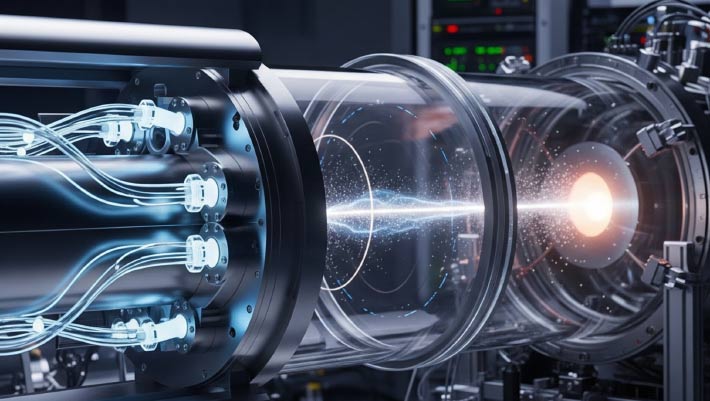Now Reading: Physicists Unveil Breakthrough Neutrino Laser Concept
-
01
Physicists Unveil Breakthrough Neutrino Laser Concept
Physicists Unveil Breakthrough Neutrino Laser Concept

Fast Summary
- Physicists from MIT and the University of Texas at Arlington propose a “neutrino laser” concept using super-cooled radioactive atoms.
- The method involves trapping 1 million rubidium-83 atoms in a Bose-einstein condensate state to accelerate their decay rate.
- Normally, rubidium-83 has a half-life of 82 days; in this state, the decay is predicted to occur within minutes, emitting neutrinos rapidly and synchronously-similar to how photons are emitted in conventional lasers.
- The technique utilizes superradiance, where quantum coherence stimulates synchronized emission among particles for enhanced output.
- Researchers tested theoretical calculations showing such behavior for rubidium-83 atoms releasing neutrinos as a laser-like beam.
- Small-scale experiments are planned with precautions; prosperous lab exhibition could open doors for applications such as advanced communication or neutrino detection.
- Published findings appear in Physical Review Letters, cementing this groundbreaking theoretical concept.
Indian Opinion Analysis
The proposed neutrino laser represents meaningful advancement within physics and technology. For India-a nation investing heavily in science research-it could hold potential applications in particle detection systems or quantum communication networks. While the experimental realization remains uncertain due to complex manipulations required for super-cooled states like Bose-Einstein condensates, early success may drive global collaboration opportunities, including Indian institutes playing roles in practical experimentation or real-world integration.
Additionally, this breakthrough signals increasing relevance of quantum mechanics and particle physics on technological frontiers-areas where India’s growing talent pool could meaningfully contribute if domestic innovation ecosystems align with emerging global trends.




























